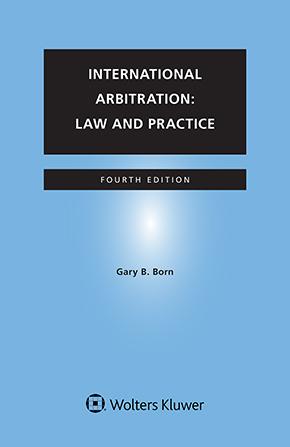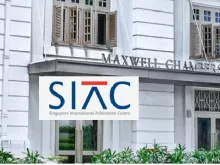CBAr 24th International Arbitration Conference: Day Two—Integrity and Arbitration
October 11, 2025
The second day of the 24th International Arbitration Conference, hosted by the Brazilian Arbitration Committee — CBAr, took place on September 18th, 2025. Three main panels were held under the theme of “Integrity and Arbitration.”
The first, entitled “Integrity and the Discipline of the Arbitral Proceeding,” was moderated by Katherine Spyrides and featured presentations by Catarina Monteiro Pires, Andrés Jana and Ricardo Aprigliano. The second, “Integrity and Parties in the Arbitral Proceeding,” was conducted by Marcela Tarré Bernini, who led the discussion between Eliane Carvalho, Carlos Alberto Carmona and Selma Ferreira Lemes. The day closed with “Integrity and Arbitrators,” chaired by José Roberto de Castro Neves, with contributions from Utku Coşar, Yasmine Lahlou, and Edgardo Muñoz.
This report synthesizes the key takeaways and insights from the second day of the conference.
Quod Non Vetat Lex, Hoc Vetat Fieri Pudor
“What the law does not forbid, integrity does.” This 2000-year-old phrase from the roman stoic Seneca captures a core idea of the first panel: even in the absence of mandatory legal rules, participants in international arbitration are often constrained by so-called “soft law.” That constraint does not arise from statute, but from the arbitral tribunal’s own reasoning. As with integrity, its binding force comes from reasoned self-commitment, not coercion. Hence the paradox—while not imposed, it can still bind conduct and procedure.
Drawing from the theory of authority as legitimacy, classically associated with Joseph Raz, Catarina Monteiro Pires explained three ways to account for tribunals’ choices to apply soft law. First, dependence: a tribunal adopts soft law because its reasons align with a consensus already accepted within the arbitral community. Second, normal justification: the tribunal uses soft law because, in the case at hand, it is likely to improve decision quality—whether by enhancing fairness, efficiency, or transparency. Third, pre-emption: the tribunal follows a pre-balanced set of rules that have already weighed recurring trade-offs, replacing ad hoc balancing with a ready, stable standard.
Regardless of the rationale adopted, repeated acts of self-binding tend, over time, to produce institutionalization and convergence. As Andrés Jana observed, such harmonization benefits the system as a whole by reducing the risk of fragmented or inconsistent decision-making. This is particularly relevant in international arbitration, which cannot rely on a single uniform code of conduct. Through the tribunal’s iterated and reasoned adoption of soft law, practices gradually congeal into recognizable standards around which parties can plan, yielding a welcome measure of foreseeability.
Picking up the thread, it is worth circling back to a question that was aired months before at a Rio de Janeiro conference held in remembrance of Professor Emmanuel Gaillard: do more soft law rules breed more litigation, and should we instead pursue simplification? The perspectives brought by the panelists indicate that pluralism in arbitration is a feature, not a flaw. Soft law normativity is built bottom-up by the arbitral community, and access to justice is enriched — not hindered—by multiple credible benchmarks from which tribunals may choose. Parties who prefer the static strictures of the state-court system need not opt for arbitration. In this sense, soft law operates as a third way between the rigidity of civil procedure and a vacuum of normativity.
Cooperation Amidst a Culture of Belligerence
If self-binding by tribunals supplies one axis of integrity, the harder ask is mutual constraint between adversaries. International arbitration depends on cooperation for calendars, disclosures, document production, and expert logistics, yet—as Carlos Alberto Carmona stressed—professional training rarely equips counsel to collaborate. Marcela Tarré Bernini sharpened the point: lawyers are retained to advance their clients’ interests, not to serve a communitarian ideal of harmony. Expecting spontaneous concord is wishful thinking, and the real task is to engineer cooperation into the process.
The late Justice Cláudio Vianna de Lima captured this sociology in a single line: “lawyers are formed, conformed, and deformed by the belligerence taught in the schools of law.” Taken seriously, the aphorism argues not for moralizing counsel but for procedural architecture: clear terms of appointment and calendars; front-loaded disclosure and narrowing of issues; and institutional backstops (e.g., the authority to appoint arbitrators when parties deadlock). Cooperation, in other words, should be by design, with incentives aligned to make the collaborative path the path of least resistance.
That design has limits. As Selma Ferreira Lemes emphasized, the tribunal’s proactive role must never compromise impartiality. Still, good-faith duties permit meaningful steering to keep the case both effective and enforceable. In practice, this can include ordering clarifications or even the reformulation of requests for relief so that the dispositive section of the award can be executed without interpretive guesswork. The touchstone is reasoned neutrality: the tribunal must show how the intervention serves due process equally for both sides.
For cooperation by design to work, it needs a credible backstop, otherwise procedural and orders become merely aspirational. That is where sanctions come in. As noted by Eliane Carvalho, even though the Brazilian Arbitration Act (Federal Law no. 9.307/1996) expressly provides for monetary consequences stemming from bad-faith litigation, resort to such measure is uncommon. Tribunals often fear that a harsh sanction against one side may appear punitive, invite allegations of partiality, and provoke an annulment attempt, even if ultimately unfounded. To mitigate this possibility, practice has favored behavior-based cost modulation, translated into allocating costs in light of cooperation or obstruction. When the reasons are spelled out and tied to concrete conduct, these measures remain both palatable and low-risk, speaking the language counsel actually hear—time and money—while preserving the tribunal’s posture of even-handedness.
If calibrated penalties are the failsafe that makes cooperation credible, it does not follow that “integrity” (as self-commitment) belongs only to the adjudicators. In fact, most soft law instruments still discipline arbitrators far more than counsel. A healthier equilibrium would keep robust disclosure and impartiality standards for the tribunal while pairing them with cooperation-forward operating procedures and predictable, conduct-based cost consequences for parties. The aim is not to declaw advocacy, but to channel it—so that the same architecture that deters obstruction also protects even-handedness and preserves the efficiencies that draw users to arbitration in the first place.
Beyond Bias: The Architecture of Impartiality
The discussion on how the arbitral procedure is run naturally leads to how decisions are made. Arbitrators need room to decide—and to decide firmly—but the system also requires intelligible boundaries. The operative principle is a high shield with a clear line: ample protection for the adjudicative function, with accountability when conduct crosses into serious procedural or ethical fault, and protocols that make neutrality visible at financial and procedural touchpoints.
On civil exposure, Utku Coşar sketched a comparative map. Many jurisdictions afford robust immunity for decisions made in the capacity of arbitrator, while tolerating liability at the margins for non-adjudicative misconduct (such as refusal to perform basic procedural duties or conduct that violates due process in a gross manner). The Brazilian tendency—to analogize arbitrators to judges for their adjudicative acts—points the same way: strong protection against re-litigation through tort, with potential responsibility reserved for exceptional cases and remedies that are proportionate (often cost-related rather than open-ended damages). Regardless, the practice of cautious tribunals tends to be methodical by design: document procedural choices, explain them, and keep a paper trail that shows fairness rather than passiveness.
Criminal law sits on a different plane. Edgardo Muñoz noted that in spite of classic offenses (bribery, fraud, money laundering) obviously falling outside civil immunities, the allegation of criminality can still come to be weaponized to pressure tribunals. That prospect argues for prophylaxis rather than panic: institutionalized fee arrangements, transparent communications, and a strict conduct of party equality in procedural dealings. Here, “integrity” means not only being impartial, but managing financial and procedural touchpoints so that impartiality remains legible to outsiders.
Taken together, all the messages converge on a single operational advice: make neutrality visible. Reasoned explanations, early and expansive disclosures, and institutionally defined guardrails protect both decisional independence and the appearance of fairness. The final goal is not to constrain arbitral tribunals, but to make their judgments durable.
Where This Leaves Us
Bottom line, the day’s message was practical. When tribunals announce and justify the soft law frameworks they will use—and then apply them consistently—those choices become institutionalized. They harden into practice, travel across cases and jurisdictions, and push international arbitration towards a converging standard which parties can, at least up to a certain degree, anticipate. Regrettably, it remains true that parties must be nudged toward cooperation, and when they are not, calibrated and foreseeable sanctions need to be available and applied. At the same time, arbitrators need room to decide within clear boundaries, with broad adjudicative powers paired with the necessary accountability.
Put together, these three levers yield proceedings that are predictable without being rigid, adversarial without being wasteful, and credible due to transparency. Proceedings that reflect, precisely, the kind of integrity that legitimizes international arbitration as a whole.
Follow along and see all of Kluwer Arbitration Blog's coverage of CBAr 24th International Arbitration Conference here.
You may also like











